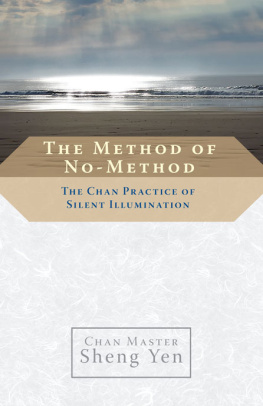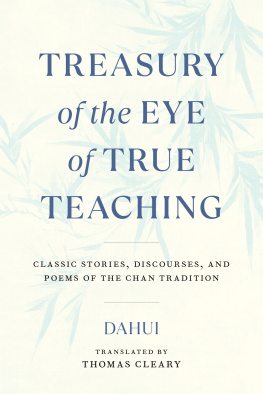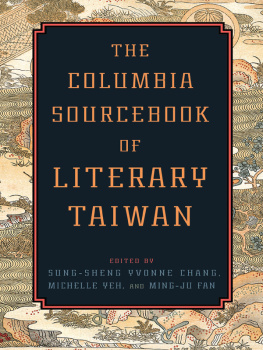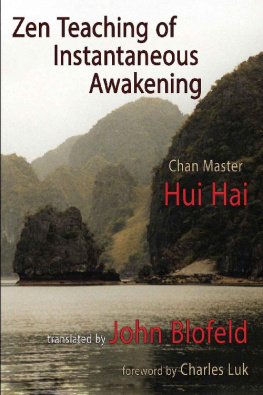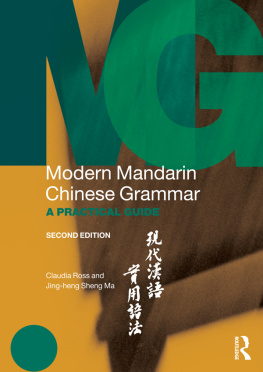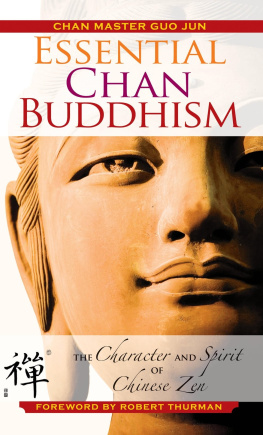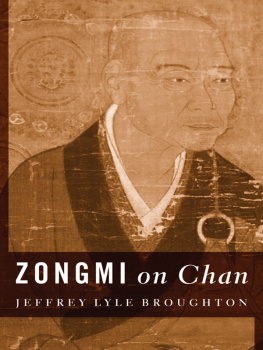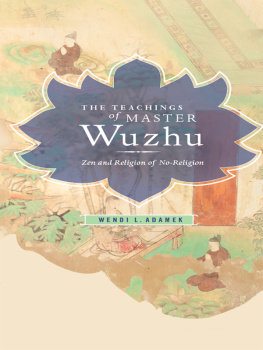Chan Master Sheng Yen is a great teacher, and I have a great confidence in his scholarship and wisdom.
Thich Nhat Hanh
ABOUT THE BOOK
Here is the inimitable Master Sheng Yen at his best, illuminating the ancient texts of the Chinese Zen tradition to show how wonderfully practical they really are, even for us today. The texts, written by two of the founders of the Tsao-tung sect of Chan Buddhism, are poems entitled Inquiry into Matching Halves and Song of the Precious Mirror Samadhi. Both emphasize the Chan view that wisdom is not separate from vexation, and both speak of the levels of awareness through which one must pass on the way to realization. Both are also works of Buddhist philosophy that can serve as guides to spiritual practice for anyone.
CHAN MASTER SHENG YEN (19302009) was a widely respected Taiwanese Chan (Chinese Zen) master who taught extensively in the West during the last thirty-one years of his life, with twenty-one centers throughout North America, as well as dozens of others throughout the world. He has co-led retreats with the Dalai Lama, and he is the author of numerous books in Chinese and English, including Song of Mind, The Method of No-Method, and his autobiography, Footprints in the Snow.
Sign up to learn more about our books and receive special offers from Shambhala Publications.

Or visit us online to sign up at shambhala.com/eshambhala.

THE INFINITE MIRROR
Commentaries onTwo Chan Classics
Chan Master Sheng Yen

Shambhala
Boston & London
2013
Shambhala Publications, Inc.
Horticultural Hall
300 Massachusetts Avenue
Boston, Massachusetts 02115
www.shambhala.com
1990 by Dharma Drum Publications
Cover design by Jim Zaccaria
Cover art: Catherine Mooney
All rights reserved. No part of this book may be reproduced in any form or by any means, electronic or mechanical, including photocopying, recording, or by any information storage and retrieval system, without permission in writing from the publisher.
Editor: Christopher Marano; Editorial Assistance: Harry Miller, Stuart Lachs, Jonathan Bardin, Nancy Makso; Translators: Ming Yee Wang, Pei-gwang Dowiat; Transcribers: Dorothy Weiner, Nancy Makso; Book Design: Page Simon
Library of Congress Cataloging-in-Publication Data
Shengyan, 1930
The infinite mirror: Commentaries on two Chan classics /Chan Master Sheng Yen.
p. cm.
Originally published: The infinite mirror: Tsao-Tung Chan: commentaries on Inquiry into matching halves and Song of the precious mirror Samadhi.
Elmhurst, N.Y.: Dharma Drum Publications, 1990.
eISBN 978-0-8348-2631-1
ISBN 978-1-59030-398-6
1. Spiritual lifeZen Buddhism. 2. Shitou, 700791. Can tong qiCommentaries. I. Shitou, 700791. Can tong qui. II. Liangjie, 807869. III. Title.
BQ9288.S524 2006
294.3420427dc22
2006045045
Table of Contents
Inquiry Into Matching Halves, written by Shih-tou Hsi-chien, and Song of the Precious Mirror Samadhi, written by Tung-shan Liang-chieh, are considered the two most important works of the Tsao-tung (Soto) Sect of Chan Buddhism. The Tsao-tung sects origin can be traced directly to Shih-tou Hst-chien (700-790), and indirectly to his grandmaster, Sixth Patriarch Hui-neng (638-713). However, the Tsao-tung sect derives its name from its two most famous patriarchs, Chan masters Tung-shan Liang-chieh (807-869) and Tsao-shan Penchi (840-901).
Shih-tou had many disciples, among them Chan masters Yao-shan Wei-yen (745-828) and Tien-huang Tao-wu (754-807). Like Shih-tou, Yao-shan Wei-yen transmitted the Dharma to many descendants, including two important Chan masters, Yn-yen Tan-sheng (780-841) and Tou-tzu Ta-tung (819-914). In turn, Yn-yen Tan-sheng transmitted the Dharma to Tung-shan Liang-chieh. Therefore, the authenticity of the Tsao-tung sects connection with the Chan sect is clear and unquestionable.
Inquiry into Matching Halves is held in great regard by the Tsao-tung sect. The wisdom of Shih-tous work was drawn upon extensively by Tsao-tung teachers, and they made Inquiry into Matching Halves more comprehensible to disciples. In Japanese Buddhist compilations, Inquiry into Matching Halves and Song of the Precious Mirror Samadhi are often grouped together in order to introduce the philosophy of the Soto sect. However, in my experience, I have yet to find any book which has expounded Inquiry into Matching Halves clearly.
Today in Taiwan there are few people who expound the teachings of these two Buddhist works. Since I am a Dharma descendant of the Tsao-tung lineage, I feel it is my responsibility to transmit Tsao-tung Dharma to my disciples and students. Part of that responsibilty includes explaining these important texts. I introduced these two Buddhist works in the Chan Meditation Centers Wednesday Dharma Class. Generally, I do not talk about Buddhist philosophy during intensive Chan retreats; instead I emphasize methods of practice. In the Wednesday Dharma Class, I talk about Buddhist philosophy as well as methods of practice. Inquiry into Matching Halves and Song of the Precious Mirror Samadhi are ideal texts for such a class.
In truth, the original Chinese versions of these two articles are extremely difficult to understand. Translating them into English was also no easy task. Both of these articles, along with brief biographies of their authors, already exist in Poetry of Enlightenment. In this book I offer in-depth commentaries on each text. My commentaries are based on my understanding of the texts, the Patriarchs who wrote them, and my experience derived from using their methods of practice. Since I am neither Shih-tou nor Tung-shan, I am sure that I have not fully and clearly explained the meaning of their works. They are difficult texts to penetrate. Questions arose constantly during the translation, explication, and even the editing of these texts. The more questions I was asked to explain, the clearer the text became. I am happy that the project is completed.
To my knowledge, there are no English commentaries on these Tsao-tung texts. I also believe there are no other English translations of the Song of the Precious Mirror Samadhi; there may be one English translation of Inquiry into Matching Halves. Of course, I may be wrong. My intention is that, with this book, these important Buddhist works may become known to English readers and more understandable to Buddhist practitioners. In reading this book, I hope followers of Buddhism will gain a better understand of the philosophy and methods of practice of Tsao-tung Chan. For many, it may be the first introduction to the teachings of this sect.
I would like to add that these commentaries are not scholarly treatises. The philosphy is intended for all sincere followers of Buddhism; the explanation of methods of practice are meant to inspire practice, not research. I have experience in doing research and writing academic treatises, but in this case, I leave it for someone else. I hope this small book will lead to more and better books on this subject.
Acknowledgements
I wish to sincerely thank everyone responsible for the creation of this book: Ming Yee Wang and Pei-gwang Dowiat, who expertly translated my often confusing lectures into English; Dorothy Weiner and Nancy Makso, who patiently transcribed the lectures; Chris Marano, who edited the bulk of the commentary and who was quite diligent in preparing the book efficiently; Harry Miller, who helped Chris enormously in his efforts to make the text understandable and palatable to readers; Stuart Lachs, who offered valuable criticism and knowledgable opinion about many of the concepts and the overall tone of the book; Jonathan Bardin and, again, Nancy Makso, who copy-edited and proof-read; and Page Simon, who designed this book and its cover; and Trish Ing, who supervised all phases of the book. I also wish to thank all members of the Wednesday Dharma Class. If not for them, this book would not exist.
Next page

